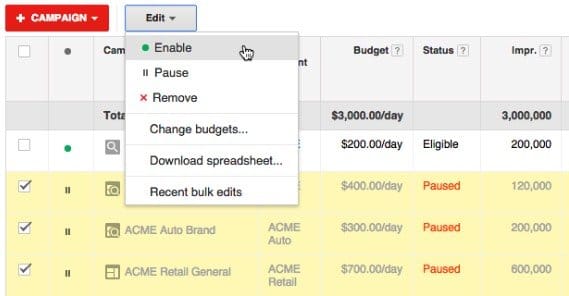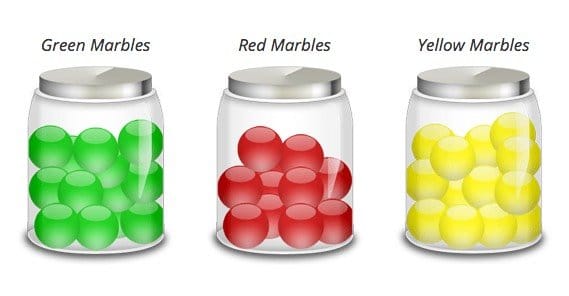11 Ways to Create and Use a Silo Landing Page

The normal structure of a blog is pretty haphazard. You write what comes to mind in your content plan, throwing in more timely and relevant content when it’s available, and you post it as it comes. If you’re being proactive about it, you might have a tag or category system in place to sort different types of content. Someone can visit your site and click on a blog post, but they can’t really click on a category to read content in that category. They reach the bottom of a post and they see tags, and they can click to browse a given tag, but that’s more of a cluster of content than a silo.
In real life, a silo is a tall vertical structure that holds a single type of content, typically grain or fodder, stored until it is ready to be shipped out or used. The keys here for web content are “tall vertical” and “single type of content.”
Here are two real world examples. First, the very site you’re on right now. You can see a blog index (www.growtraffic.com/blog/) or you can see individual categories (https://growtraffic.com/blog/category/how-to) but you don’t see, at the top of the site, any indication that each is a silo. The blog as a whole is one entity, which you can sort once you’re already into it.
Second, if you go to Hubspot, you’ll see “blogs” at the top. If you click it, you see that they actually have three “blogs” for different topics. One is a marketing blog, one is a sales blog, and one is an agency blog. They’re even arranged in a silo structure; tall and vertical, with sorted content in each column. You know that if you want to read about sales rather than web marketing, you can visit the sales silo. If you prefer reading content dedicated to agency-level topics rather than business-level topics, you can read the agency blog.
There’s nothing wrong with taking one approach over another. I would argue that the silo method works best with you have a number of different contributors and you’re posting several posts per day, like Hubspot. Just looking right now, they have 9 posts throughout their three blogs, all posted within the last 24 hours. When you have that much content, it’s easy to lose readers of specific types because you’re flooding out the content they want. By organizing everything into a silo structure, each category of readers can read the blog focused on them without being flooded with content they won’t find useful.
Meanwhile the normal tag and category method works just fine for most sites, including almost every small blog and business out there. If you don’t run the risk of losing readers in a flood of uncategorized content, you don’t need to worry too much about silo structures.
That said, if you do want to implement a silo structure, one thing you can do is have dedicated landing pages to each of them. The silo can stretch to more than just your blog, after all. To continue the illustration with Hubspot, they very likely have landing pages specifically for marketers, others specifically for salesmen, and still others specifically for agencies. These lead not only to the silo blogs, but also to the silo services. Hubspot has services for each, and rather than cluster them all in one jumbled mess, they silo everything.
Just look at their top bar navigation. Under software you see three silos, one for sales, one for marketing, and one that fits both. There’s also an entire top navigation dedicated to agencies, with no sub-silos.
You can do the same with silo landing pages. Here are some ways you can do it.
1. Determine Which Silos You Want
The first thing you need to do is determine the silos that will be present on your site. Chances are you already have some idea, but you may be going too specific. Hubspot, massive business and blog that it is, only has three main silos. Your site probably isn’t larger, and probably doesn’t need more than three or four total. Sometimes even two is enough, though three seems to be the ideal medium.
If you find yourself specifying silos that look like long tail keywords, you’re going too far. Long tail keywords all group together around central core keywords; those core keywords are your silos. Long tail keywords are the focuses of the content within the silos.
This is where you need to plan out a change in structure. Silo structure necessitates at least a minor change to design. At minimum, you should have your blog button a drop-down that has links to each of your silo blogs. If you don’t have enough varied content to cover multiple silos, you need to branch out more so you can make it.
You don’t need to go all-in with a website redesign, but you may need to do some overhauling in the back end to make everything work on a logical level.
3. If Necessary or Possible, Change URL Structure
This is what I mean. Silos tend to be organized in a www.example.com/silo1 www.example.com/silo2 sort of way. If your blog is currently stuck under the example.com/blog/article-title format, you’re going to need to do some restructuring.
Unfortunately, changing the URLs to blog posts can have a negative effect on your SEO. This is because Google assigns value to pages via their URL. When the URL changes, Google considers it a new page. You will have to do permanent redirection from old URL to new URL in order to maintain most of your value. Ideally, the silo structure will help buffer the loss you take from changing so many URLs.
4. Create Themed Services for Each Silo
A silo structure is only as good as the content you have to offer for each one. If your services are only aimed at one of three silos, what good are the other two doing? You may be attracting readers, but if your services have nothing to offer them, you’re not going to benefit from those silos.
At the very least, you need to make three variations of your service for different silos. Even if the service applies to all three, you need to rebrand, spin off, and isolate each silo. This gives you something of unique value to give to each silo, and you can build specific features for each to cater to that kind of audience.
5. Create Themed Landing Pages for Each Silo
Now that you have individual blogs and services for each silo, you get to set up landing pages for them. Once again, the core concept to keep in mind here is a narrow field of view. Landing pages already need to be specific; keeping them isolated to each silo helps. Even if you have a similar landing page for each silo, you want to optimize it specifically for that silo. Each silo will, ideally, have a different primary set of users. You can further optimize for these users by setting up individual silo mailing lists, to go along with the rest of your silo services.
6. Set Up Themed Advertising for Each Silo
Are you seeing the pattern yet? At this point you should be. You’re essentially branching your single business and service into three related but separate services all under the same business heading. Each silo gets its own unique instance of each part of your marketing; your blog, your content, your landing pages, and now even your advertising.
In this case, you’re going to want to split your PPC ads into different campaigns, one for each silo. You can’t split test one silo against another; they have different audiences so targeting will necessarily be either too vague or specific to one side or the other. You may have to drop your budget overall to target three groups instead of one, but it should help you focus growth faster to make up for it.
7. Don’t Divide Social Profiles
The one area of your marketing that you don’t want to segment into silos is your social media profiles. It’s hard enough to get one to grow without trying to splinter your audience. Think about it this way; your advertising directs people to your silos, but your social media profiles are part of your brand. Your brand is above and oversees your silos, it’s not down there among them.
The one concession you can make to silo structure in your social media is through targeting. Even Facebook posts can be organically targeted towards a silo audience when the content is only relevant to one silo.
8. Be Willing to Prune or Spin Off Silos
Keep an eye on your silos as you go. There may come a time when one silo is dramatically underperforming compared to the others. This might be an indication that your audience doesn’t really care for that silo, and that you can roll it back into your other silos or drop it altogether.
Conversely, you might discover that one silo is getting all of the attention. Splitting that silo into more than one may help you diversify and focus your audience to grow them faster. Each individual silo might only have 65% of the traffic of the singular megasilo, but 65+65 is more than 100.
9. Contribute to Each Silo Equally
Before you go splitting or killing individual silos, make sure you’re using them properly. The number one problem people have with a silo structure is not utilizing each one of them to the fullest extent possible. If you have three silos and one of them has 1 post per day, one of them has 2 posts per day, and one of them has 5 posts per day, the one with the most posts is probably going to do the best. That’s because it has all of the attention and money poured into it.
Make sure you’re not neglecting a silo, lest you run into issues with underperforming campaigns. It’s the same way you can’t accurately split test two ads when one of them gets 90% of your budget.
10. Cross-Link Silos Liberally
With a silo structure, there are two kinds of links you can make internally on your site. One is the internal silo link, which links from one post to another within the same silo. The other is the cross-silo link, which links from one silo to another. I recommend doing both, but you’re going to want to do more of the in-silo links than the outside links.
The reason for this is to help Google and the other search engines recognize the silo structure. They’ll get most of it out of your URL structure, but category pages work the same way, so you need emphasis based on content keyword grouping and, yes, linking. I recommend about a 3:1 ratio; three links within the silo for every one link outside of the silo. This establishes three distinct webs of linked content, all of which are linked under your overall brand banner.
11. Make Use of Breadcrumbs
Breadcrumbs at the top of your site help a lot with the silo structure as well.
The format will look generally like this:
Brand > Blog > Silo Name > Subcategory > Post
This gives users the ability to quickly and easily navigate categories within your silos, and navigate back to the main silo structure, without having to go back to your blog home and click on an individual silo again and again when they want to explore. It also gives them a quick link to your silo index or your homepage as well.
What do you like about silo structure? It’s a rarity online these days, as blogs are mostly considered to be single entities, and only the largest companies break their content up into silos. It’s not a necessary step to growth, but starting early might lay the foundation for easy expansion later on.

 ContentPowered.com
ContentPowered.com











